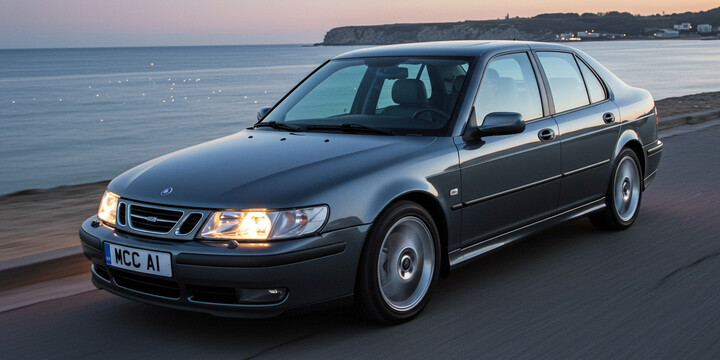
SAAB 9-3 (2002-07) 4DR SALOON 1.8I 122 AIRFLOW SNAV
The SAAB 9-3 (2002-07) 4DR Saloon 1.8I 122 Airflow SNAV is a stylish, compact saloon that offers a distinctive blend of Scandinavian design and practical functionality. Positioned well in the UK market, this model appeals to drivers seeking a reliable, comfortable, and well-equipped vehicle suitable for everyday commuting, family use, or those who appreciate a refined driving experience. With its sleek four-door design and solid build quality, the SAAB 9-3 is often appreciated for its smooth handling and good balance of performance and economy, making it an excellent choice for both first-time drivers and more experienced motorists.
Known for its distinctive design features and comfortable interior, this model stands out for its reliability and genuine driving pleasure. It's particularly popular among those who value a sporty yet sophisticated appearance, combined with practical features like good fuel economy for its class. Compared to rivals, the SAAB 9-3 delivers a quality feel and all-weather handling, thanks to its well-tuned chassis and safety features. For anyone considering a used car, the SAAB 9-3 (2002-07) 4DR Saloon 1.8I 122 Airflow SNAV offers a compelling mix of style, comfort, and dependability—making it a noteworthy option in the compact saloon market.

average use

The data indicates that the most recent mileage readings for the SAAB 9-3 (2002-07) 4DR SALOON 1.8I 122 AIRFLOW SNAV are evenly distributed across six mileage ranges, each representing approximately 16.7% of the recorded vehicles. This even distribution suggests that there is no dominant mileage bracket, which could imply a diverse usage profile among owners. Notably, there are no readings below 70,000 miles or above 180,000 miles, indicating that the recorded data primarily covers vehicles within a mid-range mileage spectrum.

vehicle values

The data indicates that for the Saab 9-3 (2002-07) 4DR Saloon 1.8i 122 Airflow Snav, the private sale price spectrum is concentrated at the lower end, specifically within the £0 to £1,000 range. Notably, 100% of the observed private sales fall into this price bracket, suggesting that these vehicles are generally valued or sold at very affordable prices in the private market. This could reflect factors such as age, condition, or market demand for this particular model.

production years

The data indicates that the majority of the SAAB 9-3 (2002-07) 4DR Saloon 1.8I 122 Airflow Snav vehicles were manufactured in 2007, accounting for approximately 83.3%. Only a smaller proportion, about 16.7%, were produced in 2008. This suggests that the most common model year for this vehicle within the sample is 2007.

colour popularity

The data shows that the majority of the SAAB 9-3 (2002-07) 4DR Saloon 1.8I 122 Airflow Snav vehicles are painted in black, accounting for 83.3% of the sample. In comparison, a smaller proportion, 16.7%, are red. This indicates that black is the predominant colour choice among these vehicles, suggesting a strong preference or popularity for black paint within this model and production period.

ownership cycle

The data indicates that for the Saab 9-3 (2002-07) 4-door saloon 1.8I 122 Airflow Snav model, the majority of vehicles (50%) have had five registered keepers. Notably, there is a small but significant single-vehicle representation with two, six, or seven registered keepers, each accounting for approximately 16.7%. This distribution suggests that most vehicles tend to have a relatively consistent number of keepers, with a notable portion experiencing multiple changes in ownership, which could imply varying ownership patterns for this model.

engine choices

The data indicates that all sampled vehicles of the Saab 9-3 (2002-07) 4-door saloon with the 1.8L engine are equipped with an engine capacity of 1,800cc. In terms of fuel types, a significant majority (66.7%) run on petrol, while a notable third (33.3%) are gas bi-fuel models, capable of using both petrol and gas. This split suggests that while petrol remains the dominant fuel choice, a considerable portion of these vehicles are equipped for bi-fuel operation, reflecting a potential interest in alternative fuel options during that period.












